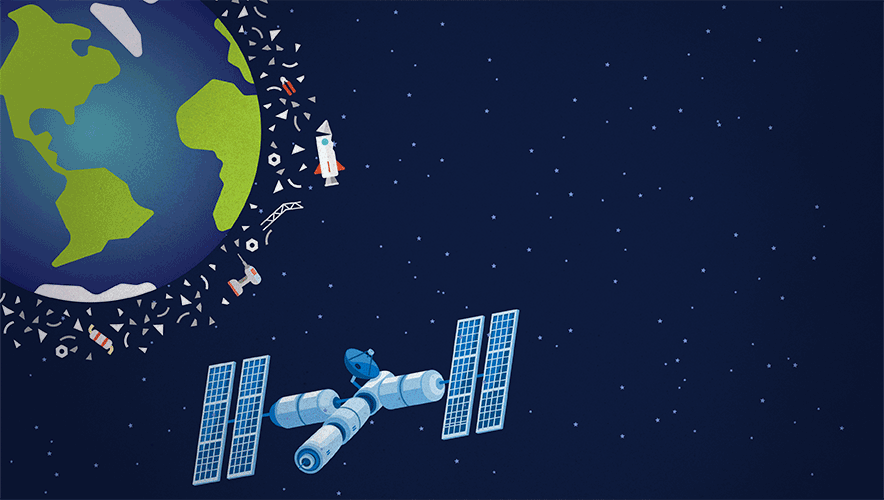Editor’s Note: Damaging Debris
In 2016, a chip appeared in a window on the International Space Station (ISS). By analyzing the damage, scientists found that the culprit was a paint fleck moving at high speed through space. An article published by the U.S. National Aeronautics and Space Administration (NASA) explained that “even tiny paint flecks can damage a spacecraft when traveling at these velocities.... In fact, millimeter-sized orbital debris represents the highest mission-ending risk to most robotic spacecraft operating in low Earth orbit.”
And the risk of space debris lurks for years before becoming apparent. NASA noted that “in 1996, a French satellite was hit and damaged by debris from a French rocket that had exploded a decade earlier.”
As the amount of space debris continues to grow, it poses an even greater threat. In late November 2021, a spacewalk scheduled for NASA astronauts onboard the ISS was abruptly cancelled due to “the possibility of space debris,” National Public Radio (NPR) reported. It was unclear, according to NPR, whether this hazard was related to a Russian missile test that destroyed a Soviet-era satellite.
In a post for Security Management’s “Today in Security,” ASIS Content Development Director Scott Briscoe noted that the blast from that missile test “created a cloud of space debris that remains in orbit, which critics say presents a potential hazard.”
The threat of individual pieces of trash colliding with spacecraft is largely unknown, making it difficult to protect against.
The Russian blast alone “generated more than 1,500 pieces of trackable orbital debris and will likely generate hundreds of thousands of pieces of smaller orbital debris,” Briscoe wrote.
This debris is added to the more than 27,000 existing pieces of debris that are tracked by the U.S. Department of Defense’s global Space Surveillance Network sensors. “Much more debris—too small to be tracked, but large enough to threaten human spaceflight and robotic missions—exists in the near-Earth space environment,” according to NASA.
While the debris produced by the Russian blast is the largest such cloud created by such a test, Briscoe noted, it is not an isolated incident. “A Chinese missile destroyed an old weather satellite in 2007, and India did so in 2019. The United States also destroyed a satellite using a ground-based missile in 2008.”
The general risk of space debris is well known, but the threat of individual pieces of trash colliding with spacecraft is largely unknown, making it difficult to protect against. In this issue’s cover story, Assistant Editor Sara Mosqueda reports on a similarly ubiquitous yet elusive threat—weather. Mosqueda explores a singular severe weather event—extreme cold—and its devastating effect on the power grid in the U.S. state of Texas, leaving widespread outages to millions of people during a dangerous storm.
Regulatory reports on the incident noted that the main cause behind the power grid collapse was the failure to “‘winterize’ the generating units for cold weather conditions.” The conclusion captures both the mundane nature of the threat and the ways that seemingly small risks can have devastating consequences. Just like a tiny fleck of paint in space.

Teresa Anderson
Editor-in-Chief










